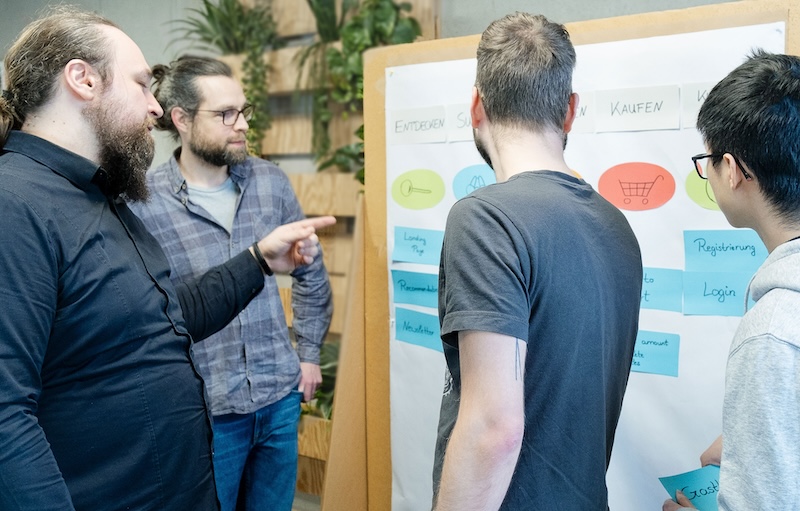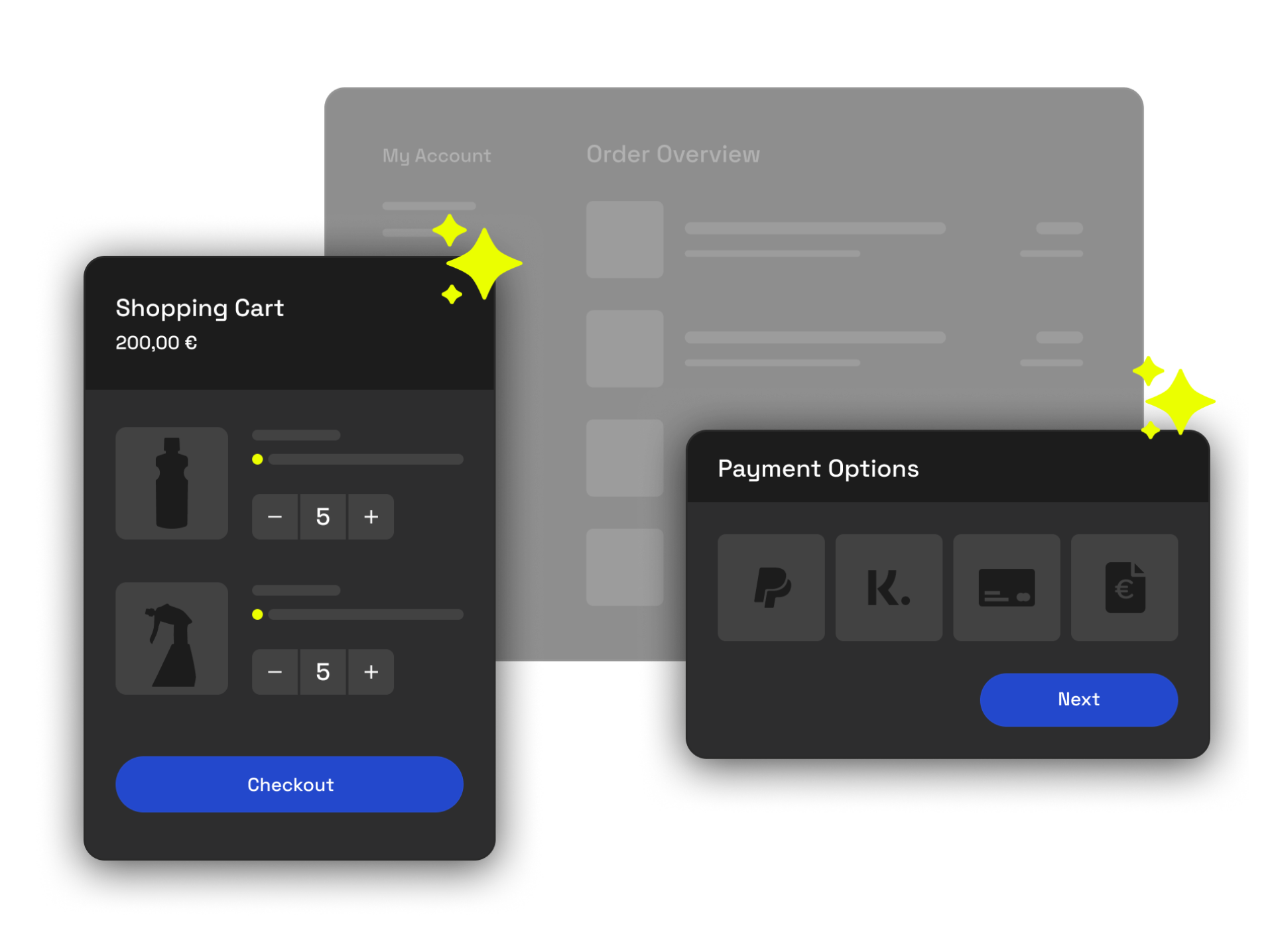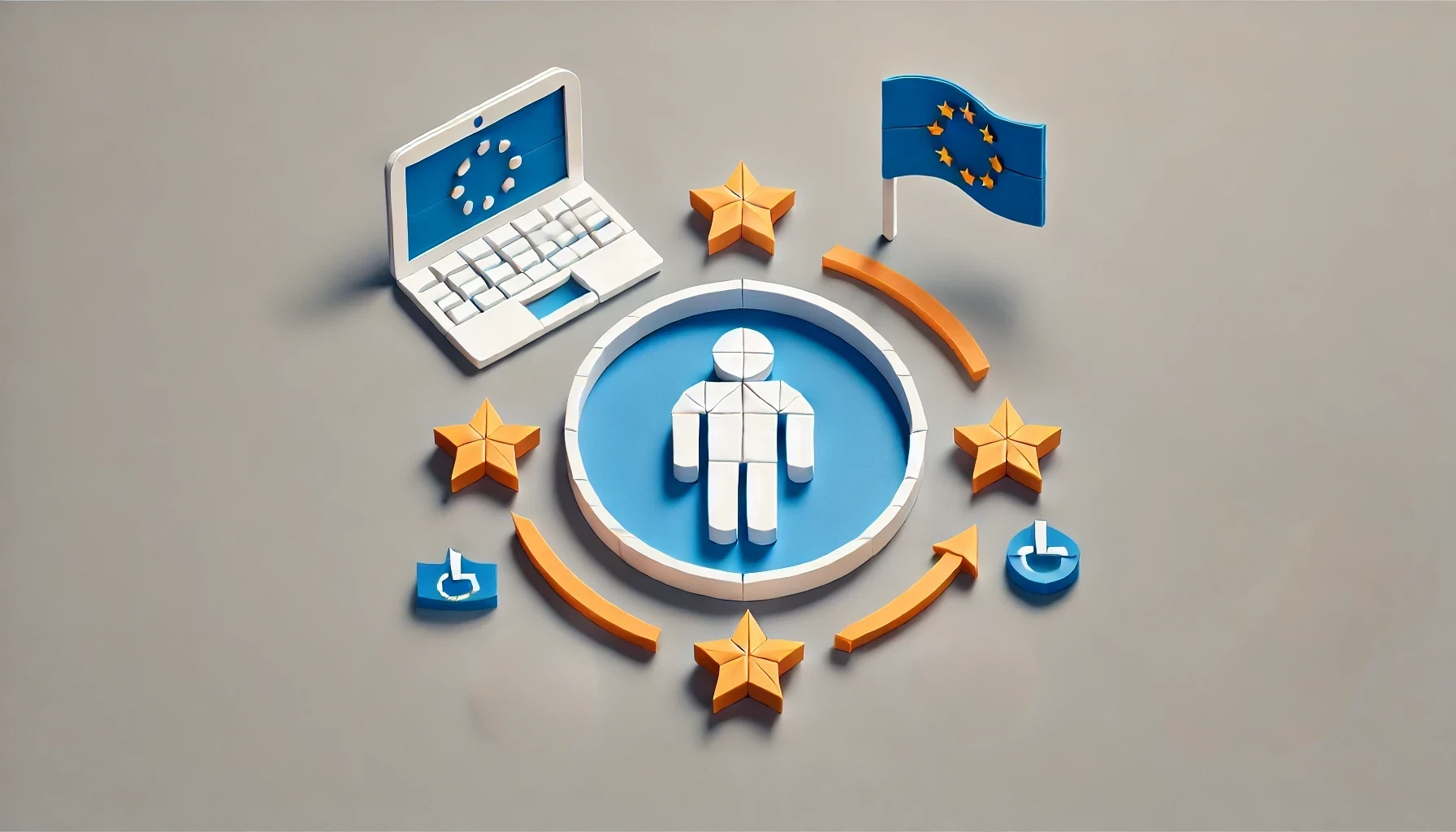-
01. Analysis
We start the project with a detailed requirements analysis and prioritisation.
-
02. Overview
We gain an overview of your system landscape for merchandise management, logistics, customer management, etc.
-
03. Architecture
We develop a system architecture for your store and the required interfaces. We often work according to the principle of ‘verticalisation’. This means that the store is structured in vertical modules that are developed independently of each other and ideally communicate with each other asynchronously or via predefined interfaces.
-
04. Design & Development
We put together a team with the right experience, including a Team Lead and a Team & Product Coach. Together with you, we build up relevant domain knowledge at an early stage in order to get started with the implementation quickly. We consider essential requirements such as data protection, IT security and digital accessibility right from the start and always keep the users and their needs in focus - for true user centricity.
E-commerce solutions
There are powerful standards in e-commerce - but not every ready solution fits your business model one-to-one. We help you to assess whether customised development offers real added value or whether a well thought-out combination of standard software and targeted extensions is the better choice. For scalable, efficient and future-proof businesses.

When is a customised
e-commerce solution
the right choice?
The more differentiated your business model and the more dynamic your competitive situation, the more you will benefit from a customised e-commerce solution.
- Can your USP be captured by a standard solution?
- What is the number and variety of products on offer?
- Are you both a producer and a retailer?
- Where and how is your customer data collected and managed?
- What are the current sales figures and growth forecasts?
- Does your store cater to both B2B and B2C?
- How often are new products or limited editions added?
- Are there configurations for your products?
- Which interfaces are required, e.g. to merchandise management systems or transport service providers?
- Are there safety requirements and legal regulations for your goods (e.g. for highly flammable or toxic substances)?
Our
approach
The Challenge of Accessibility
Advantages of an
accessible web shop
-
An accessible webshop is directly usable for people with disabilities – opening the door to more potential customers.
-
People with age-related or temporary impairments benefit just as much as those with a different native language or limited digital experience.
-
Mobile users appreciate clear structures, strong contrasts, and intuitive interactions.
-
Clear navigation, understandable content, and logical flows improve the user experience for everyone.
-
Technically clean, accessible websites are easier for search engines to read and index – boosting SEO performance.
-
Semantically structured code simplifies maintenance and reduces technical complexity in the long run.
-
Accessibility is no longer optional – it's a standard in modern product development and legally required in e-commerce (e.g. via the German BFSG).
You can find out more about digital accessibility on our blog!

Reference project
Customised buying process for a new B2B and B2C web shop
igefa E-Commerce GmbH & Co. KG
March 2023 – February 2025





